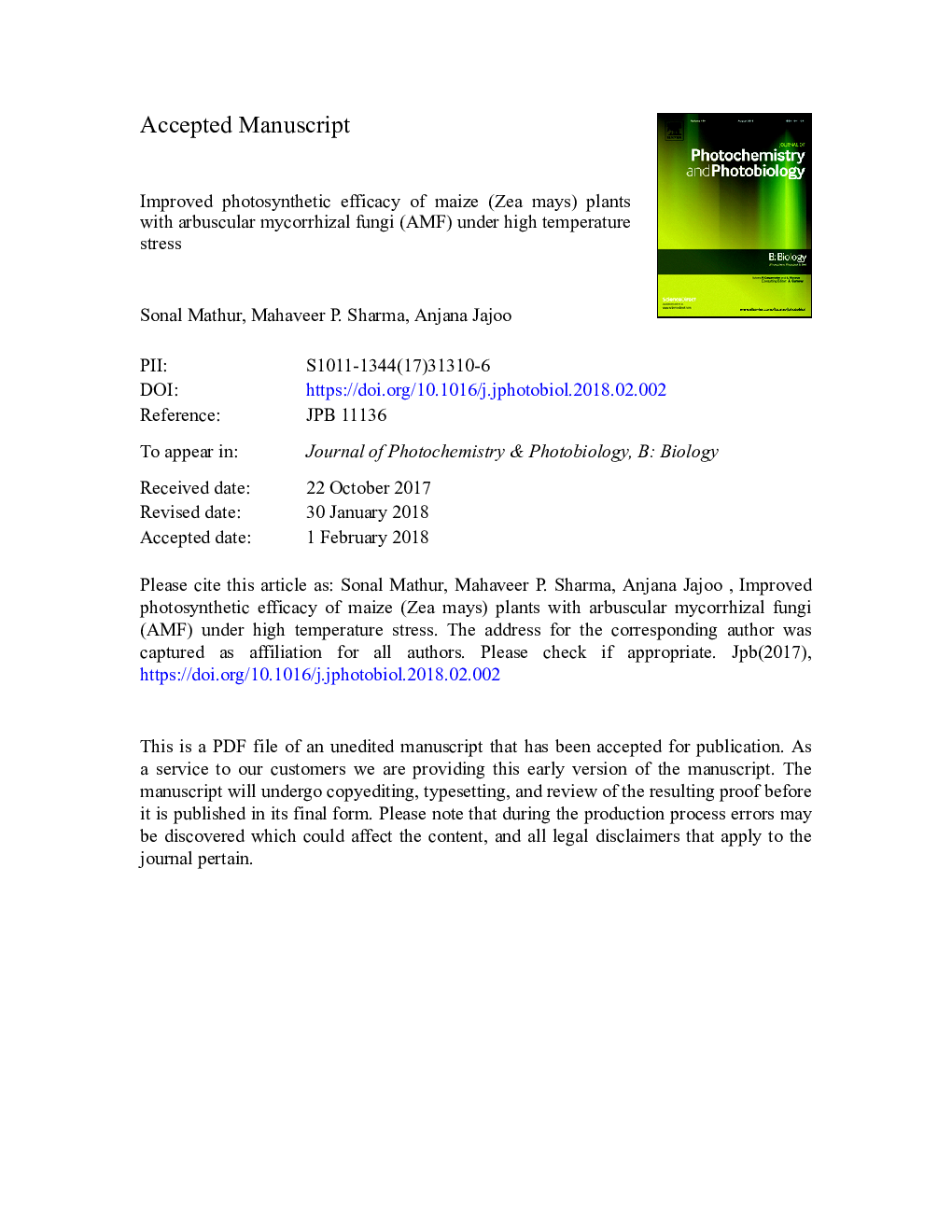| Article ID | Journal | Published Year | Pages | File Type |
|---|---|---|---|---|
| 6493358 | Journal of Photochemistry and Photobiology B: Biology | 2018 | 24 Pages |
Abstract
In this study, pot experiments were performed to investigate the effects of high temperature stress (44â¯Â°C) in maize plants colonized with and without arbuscular mycorrhizal fungi (AMF). Various parameters characterizing photosynthetic activity were measured in order to estimate the photosynthetic efficiency in maize plants. It was observed that density of active reaction centers of PSII, quantum efficiency of photosystem II (PSII), linear electron transport, excitation energy trapping, performance index, net photosynthesis rate increased in AMF (+) plants at 44â¯Â°Câ¯Â±â¯0.2â¯Â°C. Efficiency of primary photochemical reaction (represented as Fv/Fo) increased in AMF (+) plants as compared to AMF (â) plants. AMF seems to have protected water splitting complex followed by enhanced primary photochemistry of PSII under high temperature. Basic morphological parameters like leaf width, plant height and cob number increased in AMF (+) plants as compared to AMF (â) plants. AMF (+) plants grew faster than AMF (â) plants due to larger root systems. Chl content increased in AMF (+) plants as compared to AMF (â) maize plants. AMF hyphae likely increased Mg uptake which in turn increased the total chlorophyll content in AMF (+) maize plants. This subsequently led to a higher production in photosynthate and biomass. Thus AMF (+) plants have shown better photosynthesis performance as compared to AMF (â) maize plants under high temperature stress.
Keywords
Related Topics
Physical Sciences and Engineering
Chemical Engineering
Bioengineering
Authors
Sonal Mathur, Mahaveer P. Sharma, Anjana Jajoo,
